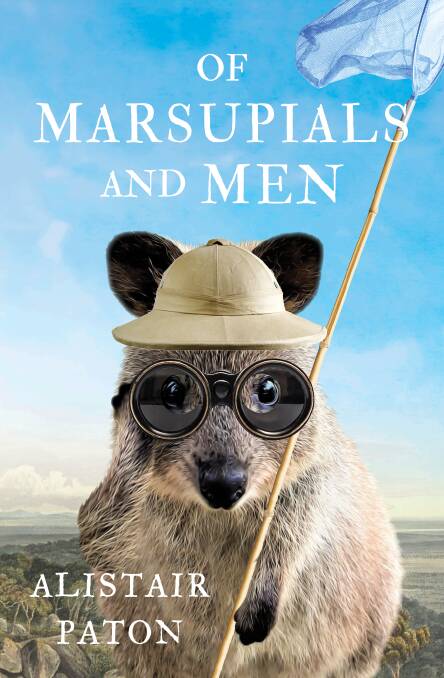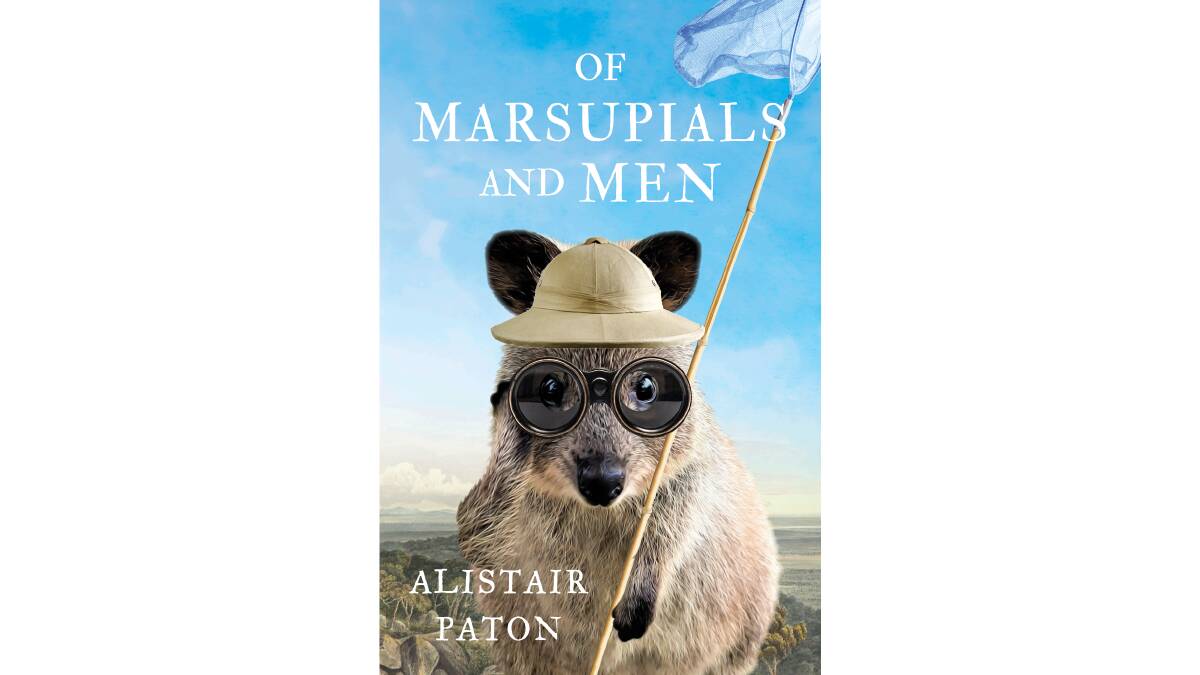
- Of Marsupials and Men, by Alistair Paton. Black Inc, $32.99.
It is difficult to drive anywhere in Australia and not mourn for what has been lost. Population growth, land-clearing, industrial agriculture and arrogance have decimated ecologies that have been here for millennia, leaving flora and fauna to cling to existence in national parks, which are increasingly vulnerable to climate change.
Even a neighbourhood walk can reveal harsh truths: recently your humble correspondent spent a minute chatting to an Indian myna on a fence post, before coming across the crumpled body of a rosella that appeared to have been hit by a car. We can tell ourselves that we live in a beautiful country, but much of the beauty is disappearing before our eyes.
How on earth have we got here?

Of Marsupials and Men, by Alistair Paton, a travel writer and sports journalist, provides an overview of the various "scientists" who have contributed to a Western understanding of Australian fauna and flora post settlement. The word "scientist" does indeed need to be used with caution, for Paton admits that many of the men - and they were almost always the male of the species - had dubious qualifications in the topic on which they pontificated.
The book opens with an exploration of the acclimatisation movement, which believed animals should be moved around the world for the purpose of serving mankind.
Paton notes that at a dinner to celebrate the first anniversary of the Acclimatisation Society of Victoria in 1862, the governor, Sir Henry Barkly, put his weight behind the idea of releasing monkeys into Melbourne's bushland. "It is desirable to acclimatise the monkey tribe if it can be done," Paton quotes Barkly as telling his fellow diners, adding that the governor thought monkeys would be "exceedingly useful, for the amusement of the wayfarer whom their gambols would delight as he lay under some gum tree in a forest on a sultry day".
Barkly's idea did not get very far, but "serious attempts" were made to introduce alpacas, antelope, goats, ostriches and glow worms, all of which failed, while we all know how things turned out for rabbits, foxes, deer, sparrows, and the cane toad.
We also know what happened to the fauna that had called this continent home, including the Tasmanian tiger, and hundreds of other species that have either been lost or are currently close to being lost. Reportedly, Australia has the highest rate of mammal extinction in the world. It is not a great claim to fame.
Refreshingly, Paton points out that acclimatisation was not a science but "best understood as the eccentric pet project of some rich men with a love of nature (as they saw it) and a lot of spare time. There is a darker side to this pseudoscience that was tied intrinsically to the notions of empire."
Paton goes on to tell us about some of the natural history collectors who made their contributions to European understanding of Australia. They include the German-born Amalie Dietrich; at the time, some considered her more significant than John Gould. Dietrich sent hundreds of plant specimens back to Germany, and also collected almost half the 600 bird species that were "known" in 1870. According to Paton, the Hamburg Horticultural Society awarded her a gold medal for a collection of 50 Australian tree species.
However, Dietrich also collected and sent back to Europe artefacts belonging to First Nations people, and, it is suggested, human skulls. Paton does not shy away from discussing these alleged crimes, but he can move on rather breezily: "Despite this ugly ethnographic stain on her career, Dietrich's achievements are undeniable, including a discovery that would have a lasting impact...In 1866, she found a 223-cm brown snake that was unknown to science."
Paton spends a chapter on the platypus - "one of nature's nervous mistakes" - and there is one on the Tasmanian experience. Media personalities such as the now rather maligned Harry Butler, "Alby" Mangels, the Leyland brothers (and their theme park that led to financial ruin and a family bust-up), Jack Absalom, former army major Les Hiddins, and the shark-hunters Ron and Valerie Taylor, all of whom have graced Australian TV screens, get a mention.
Of Marsupials and Men is an entertaining and well-researched overview of the colonial discovery of the fauna and flora of this truly incredible continent and its adjacent islands. In his introduction and epilogue, Paton makes clear that his frame of reference is, by necessity, limited. However, one cannot help wondering what is really being served by telling more stories about eccentric men (and some women) dressed in khaki shorts and with bullets stuck to their Akubras who thought they had found something new. How many stories are still not being told or heard?
- Nigel Featherstone is the author of My Heart is a Little Wild Thing.

